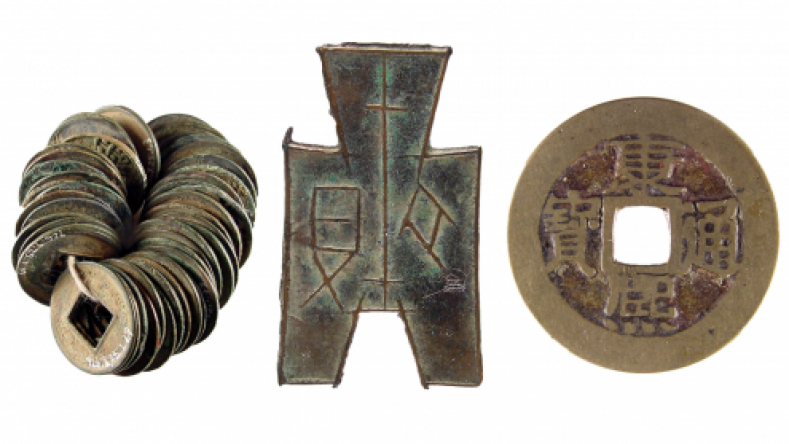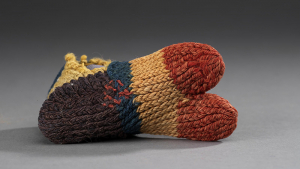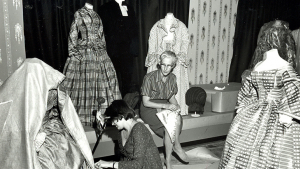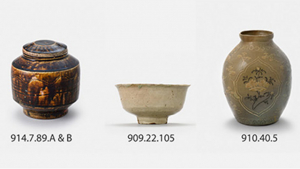The ROM is one of few museums in the world with a collection of comprehensive Chinese coins. The collection was researched to create a numismatic timeline for the Joey and Toby Tanenbaum Gallery of China. The display of 88 coins includes the best examples from the 3rd century BC to the end of the Qing Dynasty in 1911 AD.
Beginning about 5000 BC, cowrie shells were the first form of currency used in China. Later in the Bronze Age, imitations of cowrie shells, made of other types of shell, bone and bronze, were introduced. With the advent of bronze-cast coinage (771 – 221 BC), Eastern Zhou states minted their own distinctive coins. For example, round coins from western China were probably based on jade rings. After unification in 221 BC, the first Emperor standardized currency in the shape of round coins with square holes, a shape which prevailed for the next 2000 years.
The value of early coins was based on weight. The first Qin coins equaled a half liang (about 7 g), hence their name, ban liang. In 118 BC, Emperor Wudi created the wuzhu coin (5/24 liang), widely used for the next 700 years. Some variants were minted in response to inflation, such as the very rare quan and huo coins of the short-lived Xin-Mang Dynasty (AD 9 - 25).
In 621 AD, the Tang Emperor introduced the enduring tradition of casting coins with the name of the reign. These coins usually feature four characters identifying the reign on the front, and the name of the mint, the value or the year of manufacture on the reverse. Song Dynasty (AD 960 – 1297) coins are known for their variety and stylish calligraphy. The set of Kangxi Tongbao coins of the Qing Dynasty (AD 1644 - 1911) displayed in the gallery includes two coins minted by the central government and 20 by provincial mints. Specialty coins such as inaugural or auspicious coins were produced in limited quantity.





